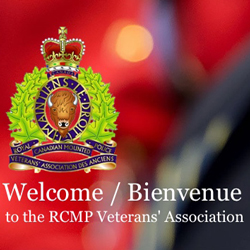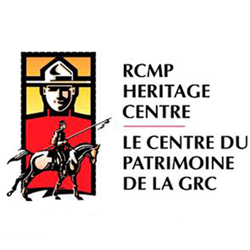Larry Burden’s This Day In The RCMP

The achievements and contributions of the Force have been built upon the individual contributions of many past Veterans. These contributions have largely been forgotten.
Veteran Sgt. Larry Burden ( #35982) served in “E” Division for 20 years has spent over ten years researching and summarizing these achievements by specific date. Nearly every day, Larry sends out an email message with a selection from his work in progress manuscript “This Day In The RCMP” to individuals interested in these historical notes.
In an effort to share his research to a large group, Larry has agreed to permit us to develop a webpage on our website. Each webpage will post Larry’s historical notations over the past week.
If you wish to contact Larry Burden or provide additional information about his research, please email him at larryburden8@gmail.com.
September 18
1874 – The men of the March West had their first view of the snow-capped Rocky Mountains over 100 miles away from the Sweet Grass Hills of Alberta.
1875 – Canada’s 15th Prime Minister John George Diefenbaker (1895-1979) was born on this day in Neustadt Ontario.
1947 – #10700 / O.439 Rene Carriere received a Commendation for his outstanding work on an investigation involving the Wartime Prices & Trade Board Orders.
1980 – Honour Roll Number 166.

Photograph of RCMP Constable Thomas James Agar (Reg.#33580).
#33580 Constable Thomas James Agar age 26 was killed on duty inside the City Detachment at Richmond, BC.
As a result of injuring his back Constable Tom Agar was assigned to light duties and was working the front counter at the Richmond City Detachment. As he began his shift at 8:00 pm he had no idea that he would be killed ten minutes later. Less than an hour before a local criminal, Steve LeClair had gone on a rampage in a Vancouver bar and murdered three people. LeClair had been drinking in the pub at the Palace Hotel and had been thrown out by the manager. LeClair’s parting words was that he was going to come back with a gun and kill him and at 7:30 pm he did just that. LeClair entered the Vancouver Bar and opened fire killing the bartender, the manager and a 72-year-old woman who happened to stop in for a beer. LeClair then left the bar and hijacked a car and ordered the occupants to drive him to the Richmond RCMP Detachment because he wanted to kill a Cop.
When he arrived at the detachment at 8:10 pm, he let his hostages go and he walked calmly into the detachment office with his .45 caliber revolver stuffed in his waistband under his coat.
Constable Agar went to the front counter to deal with LeClair and asked how he could help. LeCair responded by asking him his name and when he replied “Constable Agar”, Steve LeClair pulled his revolver and said, “How fast can you draw” and shot Agar in the chest.
#35115 Constable Wayne Hanniman was in the nearby radio room heard the shot drew his revolver and rushed out to see LeClair turn to face him and he was shot the shin breaking his leg. Hanniman went down on his knees and fired two rounds one of which hit LeClair in the chest a few inches from his heart. At the same time #22667 Corporal Peter Lucas came onto the scene from another part of the office and pointing his revolver at the wounded gunman ordered him to drop his gun and surrender.
Constable Tom Agar, a native of Montreal, Quebec had only four years’ service. His wife Joyce was eight months pregnant with their second child when he was murdered. Joyce and their one year old daughter Samantha along with over 1000 people attended his funeral where he was buried with full honours at the Ocean View Cemetery in Burnaby BC.
Steve LeClair was convicted of the multiple murders and sentenced to life imprisonment. Constable Hanniman and Corporal Lucas were awarded Commissioners Commendations for their actions and Letters of Appreciation were presented to municipal employees Sheila Wilson for rendering aid to Constable Hanniman and to Irene Truba for her role in staying calm throughout the incident and dispatching members to key areas during the attack.
1990 – After responding to a complaint of assault at Igloolik, NWT, (now Nunavut) #33661 Corporal Eric R. Streeter & #35784 Constable John D. J Ennis were shot at shot at by the suspect when they approached the house. While the two policemen negotiated for over four hours with the suicidal suspect, Mrs. Denise Ennis handled the detachment radio and telephones. The suspect eventually surrendered and was safely taken into custody. For their role in successfully apprehending the gunman without incident both policemen were awarded Commissioners Commendations for Bravery and Mrs. Ennis was given a Letter of Appreciation.
2004 – #45370 Constable Craig Andrew Thur MB, Medal of Bravery.
Earlier in the evening police responded to a complaint of a noisy bush party, where nearly 200 youths had been partying at the snow dump near Porter Creek Pond in Whitehorse, Yukon. After the majority of partygoers left the scene, Constable Craig Thur remained to conduct a foot patrol of the area and heard someone calling for help. Constable Thur followed the sound to the edge of the pond where he found a hypothermic 15-year-old boy in the water, barely managing to hang on to the edge. While Thur was pulling the boy out he heard a muffled gurgling sound coming from further out in the pond. Realizing that another person was in trouble Constable Thur scanned the surface of the pond with his flashlight and spotted a second teenager struggling to stay afloat. Thur alerted #29237 Corporal Ken Putnam and had him care for the first boy while he proceeded to wade out into the pond.
Initially he thought the pond was shallow but he soon found himself swimming in deep water being weighed down by his uniform and equipment. Struggling to swim with his flashlight in one hand, while being hampered by submerged tree stumps and hanging branches he kept the 14-year-old boy illuminated until he slipped below the surface. Having witnessed the youth submerge, Constable Thur was able to quickly find the boy’s body and grabbing hold of the victim’s jacket pulled him to the surface. The boy had only been submerged for approximately 30 seconds and immediately began breathing. Thur then towed him back to shore where the boy was transported to hospital by ambulance to join the first who had been taken in a police car.
Had Constable Thur not bothered to remain at the scene and do a follow-up patrol of the party area, both boys would likely have perished.
For his actions Constable Craig Andrew Thur was awarded Commissioners Commendation and later the Medal of Bravery.

Photograph of the Canadian Medal of Bravery.
September 19
1941 – “It was the finest thing I ever saw” was how John MacKenzie the one legged Captain of the “Pink Star” described the actions of second officer James Howard Cassidy, after their ship had been sunk by a torpedo attack.
Former Marine Division Able Seaman #12314 James Howard Cassidy’s tale of self-effacing heroism has been lost in the annals of WW2 and he was all but forgotten by his country. Born in Newcastle, New Brunswick, Cassidy enlisted as a mess boy on the R.M.S. Bayhound a vessel in the RCMP Marine Section in 1933 and re-engaged as an ordinary seaman in 1934. He served in Marine Section until the outbreak of war in April 1939, when he joined the Merchant Navy as a third mate aboard the “Lord Kelvin” eventually ending up as the second mate on the “Pink Star” in 1941.

The story of the Pink Star reads like a novel that should have been made into a movie.
She was originally named the “Saga” when she was built in 1926 by Nya Varvs A/B Oresund, Landskrona in, Denmark. The 4.150-ton steam merchant ship was re-named the “Lunby” in 1931 for A.E. Reimann Stensved. In 1941 the United States government seized all foreign ships in US waters and transferred them to the US War Shipping Administration and the Lunby was assigned to the US Lines Inc. and re-named the “Pink Star”. The Danish crew was asked to continue to serve aboard her for the war effort, which they agreed to do because their homeland was then under Nazi control.
Cassidy was assigned to the Pink Star after spending eight months at sea working on coastal vessels around the United Kingdom. He had survived previous attacks from U-Boats and German cruisers and recovered from wounds he received when he was struck by a shell fragment.
On her final voyage the Pink Star was traveling in convoy SC-44 from New York to Liverpool steaming in calm seas 275 miles northeast of Cape Farewell off the southern tip of Greenland. When German U-Boat, “U-552” captained by Erich Topp encountered her. Topp fired two torpedoes at the convoy but only the Pink Star was hit. She sank quickly after breaking in two in only eight minutes.

Photograph of U-boat Captain Erich Topp.
Only 23 of the 36-man crew survived the five-hour ordeal before a British Man O War picked them up. Most of the survivors managed to crowd into the only remaining lifeboat. When Jim Cassidy made it to the life boat, his shipmates reached out to pull him aboard, but he realized that the lifeboat was dangerously overcrowded and that if he tried to climb aboard her it would likely capsize and endanger his shipmates. Cassidy, a strong swimmer swam around the boat for a couple of minutes and over the protests of his mates he then waved farewell to the crew and said “Go on, I’m all right, so long”, then turned and swam off into the dark, never to be seen again.
The wooden legged Captain of the Pink Star was later quoted in the press “Cassidy swam up as cool as you please, saw the situation and swam away, we never saw him again. It was the finest thing I ever saw”.
When word of his heroism hit the press, there was talk that he should be recommended for the “George Cross” but it appears he never was. James Howard Cassidy’s sacrifice eventually faded away in to the annals of history like he did in the cold waters of the North Atlantic.
September 20

Photograph of Margaret “Maggie” Agnes Clay – wife of RCMP Sgt. S.G. Clay (Reg.#4279) (Source of Photo – RCMP Archives).
1924 – Arguably the greatest unsung heroes of the RCMP have been the wives of detachment men. Thousands of women have given up the comforts and luxuries of larger communities to follow their husbands into some of the most remote locations in Canada to live often dull and labourious lives providing unpaid services to the Force. The sacrifices of these women have gone largely unacknowledged and some have lost their lives in the process.
One of the most tragic events happed to a wife of a member happened to 32 year old Margaret (Maggie) Agnes Clay, wife of #4279 Sergeant S. G. Clay the Detachment commander of Chesterfield Inlet NWT.
On September 17th while her husband was away on patrol in the Thelon District, Mrs. Clay was attacked by a pack of sled dogs and knocked to the ground while she was walking on the beach near the detachment. By the time Constable #6316 Henry W. Stallworthy beat the dogs off of her they had managed to strip most of the flesh from her right knee to her ankle.
Stallworthy and #5718 Corporal Oliver George Petty carried her back to the detachment house where they did their best to treat her wounds, but little could be done to save her leg. Throughout the night Maggie Clay begged the men to amputate her leg and by morning they realized that gangrene was going to set in and it would have to be removed. Unfortunately the closest medical doctor was over 1000 miles away, so the men asked by the local Roman Catholic priest who had some medical training and the Hudson’s Bay Company manager to perform the operation.
At the insistence of Mrs. Clay the two men agreed signed a statement in which Corporal Petty assumed full responsibility and then hastily reviewed a book on surgery, while the two policemen sterilized the surgical instruments and dressings. The twenty-minute operation went successfully and Mrs. Clay rested easily after the surgery and got good nights sleep. To all she appeared to be recovering from the ordeal and was in good spirits throughout the day but towards evening she slipped into a coma and died shortly before midnight.
The men held off burying her for three days in hopes that Sergeant Clay would return. He arrived back at the detachment three weeks later, unaware that his wife had died.
1972 – RCMP bomb squad defuses a letter bomb in a park after removing it from the Israeli Consulate. At the Israeli Embassy in Ottawa, the RCMP find explosives in one of six envelopes arriving from Amsterdam. Arab terrorist group Black September believed responsible; Israeli official in London, England, killed a day earlier after opening a letter.
1977 – Sometimes proper recognition is delayed, as was the case for #18449 Staff Sergeant Patrick J. Dunleavy, who on this day received one of only two Merit Award and certificates issued by the Commissioner of the RCMP for work he had pioneered in 1958. Dunleavy, the NCO in charge of the Field Identification Support Services was the first person to record different facial features on transparencies so they could be combined to create a composite drawing of a suspect. The initial kit was produced and distributed by the RCMP throughout Canada and to foreign police agencies. In the 1970’s he updated the kit because hairstyles, facial hair and eyeglasses had changed. The RCMP then licensed the kit to a commercial firm in the United States and the “Identi-Kit” became a global success. In addition to the Merit Award Staff Sergeant Pat Dunleavy was presented a cheque for $1500.
September 23

Photograph of RNWMP Sergeant Arthur Richardson taken at Fort Battleford Saskatchewan. Arthur was the first member of the Force to win the Victoria Cross. (Source of photo – RCMP Historical Collections Unit – “Depot” Division).
1872 – #3058 Arthur Herbert Lindsay Richardson VC is born in Southport, Lancashire, England. Richardson a Sergeant in the NWMP took a leave of absence to serve with the Lord Strathcona Horse Regiment in the Boer War. He later received the Victoria Cross the highest and most prestigious award for gallantry in the face of the enemy that can be awarded to British and Commonwealth forces. (See July 5, 1900) After the war returned to the NWMP and retired a Sergeant Major. He returned to his native England and died on December 15th 1922 and is buried in Liverpool.
1907 – After two years of hard work the Mounties complete a 2.5-meter wide trail that ran from Edmonton, Alberta to Dawson, Yukon.
1964 – The end of an era occurred when Constables #21481 James Innes and #21750 / O.1164 Robert Hannam locked the doors to Herschel Island Detachment. The Mounted Police first established a detachment there with #2218 /O.156 Sergeant Francis Joseph Fitzgerald. (See Lost Patrol December 21, 1910) on August 7, 1903 The police presence was sent their primarily to investigate reports that American whalers were debauching local Eskimos with liquor and to assert Canada’s sovereignty at the western gateway to the Canadian Arctic. Herchel Island was the favored wintering location for American whaling fleets and Canada was concerned about the activities of American whalers after the judicial council arbitrating the border dispute over the location of the Alaskan border ruled in favour of the United States. The original detachment was two rented sod huts. The detachment may be gone but the grave of Constable # 5548 Alexander J. Lamont remains. He died from typhoid he contracted while caring for the northern explorer Vilhjalmur Stefansson who survived and lived for another 44 years. (See February 16, 1918)
1974 – FLQ (Front de libération du Québec) terrorist Bernard Lortie was found guilty of the 1970 kidnapping of Quebec Labour Minister Pierre Laporte. He was later sentenced to twenty years in prison but was paroled only seven years later. Laporte was found murdered and dumped in the trunk of a car.
1974 – While patrolling south of Nelson BC #26104 Constable John E.A. Nykiforuk and Auxiliary Constable Ron Giffen were dispatched to the scene of a stabbing. Upon their arrival they were advised that that there was no stabbing but instead a four-year-old girl named Corinne Phillipoff had died. Constable Nykiforuk rushed to the child and examined her for a pulse and found a very faint heartbeat. He immediately cleared her airway that resulted in her breathing again. She was then rushed by ambulance to the Kootenay Lake District hospital where she made a complete recovery. The erroneous report of a stabbing had been made by the child’s Russian grandmother who was in a state of shock over the ordeal and in her broken English mistakenly told the dispatcher that someone had been stabbed. Constable Nykiforuk’s clear thinking and prompt action saved the child’s life and as a result he was awarded the Priory of St. John Ambulance Meritorious Certificate.
1976 – In the early morning houses of his shift #27681 Constable Raymond S. Steen heard gunshots near the Detachment in Steinbach, Manitoba. When he went to investigate he found a well know local criminal who had recently been released from prison wandering the streets with a stolen .308 caliber rifle and taking random shots. Taking cover under a small footbridge Steen identified himself as a police officer and ordered the gunman to drop his weapon. The gunman’s response was that he wanted to kill a “pig” and had no intention of throwing down his weapon. With his revolver drawn, Constable Steen continued to talk to the gunman who continued to advance towards him. When the suspect was only 30 feet away he ceded to Steen’s reasoning and put down the rifle. When he was taken into custody Constable Steen seized over 60 rounds of ammunition from him.
For displaying courage, tactfulness in apprehending an emotionally disturbed man without incident Constable Raymond Steen was awarded the Commanding Officers Commendation.
September 24
1886 – The first steamship the “Wrigley” begins regular service on the Mackenzie River.

1903 – The NWMP establishes a detachment at Cape Fullerton on Hudson Bay.
1942 – The Alaska Highway is opened at Contact Creek, Yukon 305 miles north of Fort Nelson, BC.
1988 – Star of Courage, #38476 Troy Duane Gross, SC
When Constable Troy Gross arrived at the scene of an overturned tanker truck near Wainright, Alberta he realized that the unconscious driver was trapped inside, with gasoline flowing from the damaged tanker. Constable Gross smashed the windshield and reached inside and turned off the ignition. He then proceeded to remove the windshield from the cab and climbed inside to assist the driver. With the help of another constable and two ambulance attendants who had arrived on scene, he began to maneuver the driver out through the smashed windshield opening. During the extraction the victim became lodged in the opening but was eventually removed and transported to safety.
For his heroism in the face of grave danger Constable Troy Duane Gross was awarded Canada’s second highest medal, the Star of Courage.

Canadian Star of Courage medal as awarded to a member of the RCMP.
1990 – Parrsborro Novas Scotia constables, M.W. Johnson and C.C Morton earned Commanding Officers Commendations for bravery after a three hour standoff with an armed and emotionally disturbed man who was threatening to kill himself. The two constables eventually convinced the man to turn over his weapon and surrender.



 September 18, 2017
September 18, 2017 






